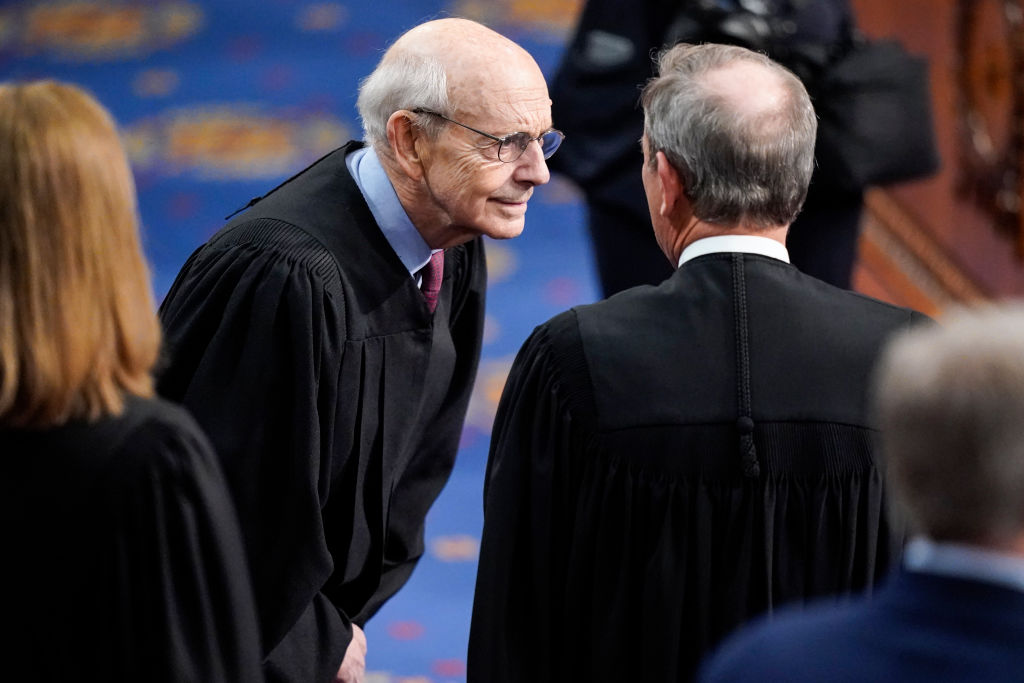Associate Justice Stephen Breyer has announced that he will retire on June 30 at noon, making room for Justice Ketanji Brown Jackson, who was confirmed on April 7 and who will be sworn in immediately once Breyer’s retirement goes into effect. Given who she’s replacing, the short-term effects on the Court are expected to be minimal – though that’s far from certain. Breyer, however, isn’t the only Justice getting on in years. What will the status be in a decade and beyond?
Active Liberty
 President Bill Clinton appointed Breyer in 1994. He was a prominent scholar whose textbooks are still in use today. Like most Justices in the mid- to late-20th century, he was a proponent of the so-called “living constitution” theory of law. In lay terms, it means that one can to some degree ignore the actual words, meanings, and intentions of the original Constitution and instead “translate” them into modern understanding according to how one perceives the concepts of law and liberty have “evolved.”
President Bill Clinton appointed Breyer in 1994. He was a prominent scholar whose textbooks are still in use today. Like most Justices in the mid- to late-20th century, he was a proponent of the so-called “living constitution” theory of law. In lay terms, it means that one can to some degree ignore the actual words, meanings, and intentions of the original Constitution and instead “translate” them into modern understanding according to how one perceives the concepts of law and liberty have “evolved.”
In his 2005 book Active Liberty: Interpreting Our Democratic Constitution, he explained his philosophy. Breyer believes that the Founders wanted a constitution that establishes a democratic institution for maximizing liberty. He distinguishes between negative and positive liberty. The first is the classical “don’t tread on me” philosophy, while the latter is “active liberty,” which involves maximizing the citizens’ participation in democracy. Breyer was a champion of this active liberty.
Originalism

(Photo by Evelyn Hockstein-Pool/Getty Images)
That theory is a stark contrast to the way issues were most often examined up until the 1930s and the infamous stitch in time that saved nine, when FDR tried to pack the Court with an additional six progressive Justices. That older guiding principle was revived in the 1980s with originalism – but, by then, the “living constitution” had become blatant political activism to redefine the Constitution. It led President Ronald Reagan’s attorney general, Ed Meese, to deliver his Great Debate lecture to the Federalist Society, calling for a “jurisprudence based on first principles [that] is neither conservative nor liberal, neither right nor left. It is a jurisprudence that cares about committing and limiting to each organ of government the proper ambit of its responsibilities.”
Since then, originalist judges have worked their way through the various courts until, under President Donald Trump and a Republican majority in the Senate, three such judges – recommended by the Federalist Society – were nominated and confirmed to the Supreme Court.
Age
One of the circumstances that made this possible was the death of Justice Ruth Bader Ginsburg at 87. She was 84 when President Barack Obama left office – two years older than Breyer today – and she could have retired strategically to avoid the risk of being replaced by a Republican. But, as Liberty Nation’s Leesa K. Donner pointed out in January 2019, “the ailing Ginsburg’s only plan to give up her lifetime position to the high court is when she is carried out in a pine box.”
Leftists took the lesson to heart, though. Shortly after President Joe Biden was sworn in, progressive Democrats called for the aging Breyer to retire – even going so far as to rent a billboard truck to drive around DC, displaying the slogan “It’s time for a Black woman Supreme Court Justice. There’s no time to waste” under the heading “BREYER RETIRE” in all caps. The Democrats did not want a repeat of what happened with Ginsburg, and Biden made sure to appoint a replacement in her early 50s to secure a progressive voice in the Supreme Court for the next three decades.

Of the nine Justices, five are 67 or older. Of these, two are originalists, two are living constitutionalists, and one, Chief Justice John Roberts, falls somewhere in between. These five will likely be culled by either retirement or death within 15-20 years, and those who will replace them will shape tomorrow’s America. The four newest members of the Court are all under 60, and of them, only Jackson falls outside the originalist camp. It is these younger Justices who will define the Court, potentially for decades.



